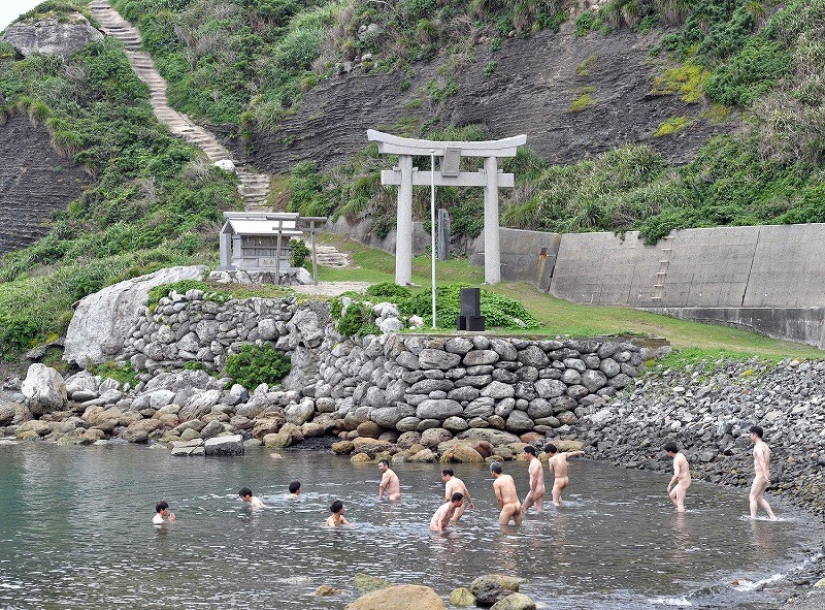Why the Japanese island of Okinoshima has been closed to women for centuries
It's hard to believe, but in Japan, progressive and technological, still has ancient religious taboos in some places. One of these places is the small island of Okinoshima, located between the third largest Japanese island of Kyushu and The Korean Peninsula. It has been strictly forbidden for women to appear on this piece of sushi since ancient times.

Okinoshima Island is home to Okitsu Temple, one of the most important Shinto shrines of the Munakata group. The island has been inhabited by people since ancient times. It was a place where seafarers and travelers who went to dangerous "barbarian lands" — China and Korea - prayed for safety.

Excavations carried out on Okinoshima, revealed to archaeologists several cultural layers filled with artifacts. Scientists have described more than 80 thousand objects of different eras and cultures. There were weapons, dishes, jewelry, mirrors and much more. Many of these items were produced overseas. Obviously, they were left in the form of donations to the temple by travelers who returned safely from long journeys.

Okitsu Temple and the entire island belong to Tagori Hime-no-kami, the Shinto goddess of the sea and patroness of sailors. It is mentioned in the oldest written document of Japan, "Nihon seki" ("Annals of Japan written with a brush"). Despite the fact that the sea goddess is a woman, there is a strict ban on visiting the island by the fairer sex on Okinoshima. Perhaps this is a Japanese interpretation of an old European omen that a woman on a ship is unlucky.

But it's not easy for even men to get to the island. The monks who live at the Okitsu Temple allow outsiders to visit the sacred place only once a year — on May 27. On this day, a religious festival is held in Okinoshima, dedicated to calming the spirits of Japanese sailors who died near Okinoshima in 1905. The number of male guests is limited and never exceeds 200 people.

The lucky ones who have received an invitation to the festival must, upon arrival on the island, completely undress and take a bath in the sea. Only after that they are allowed to approach the temple. Other rules also apply in Okinoshima. For example, men who participated in the celebration cannot be told about what they saw on the island. Also, you can not take anything with you from the island. The ban applies even to small stones and blades of grass.

When the holiday ends, the strange men leave the island and on Only the monks remain in Okinoshima. Besides them, this piece of land is inhabited by seabirds, insects, several species of crabs and ... hordes of rats. Rodents seriously annoy the monastic brotherhood and cause great damage to the population of local birds.

Environmentalists and authorities of Fukuoka Prefecture have repeatedly offered to help solve the problem. But the monks are adamant — they do not allow the idea that people will appear on the island whose plans do not include the worship of the deity. The monks also reject all proposals related to the development of tourism in Okinoshima.

This is how the position of the inhabitants of the island was voiced by the chief priest of the Munakata group of temples, Takayuki Ashizu. And even more so, the monks do not want to hear about the lifting of the ban on the presence of women. They claim that the carefully recorded history of the island does not mention a single visit of a lady for many centuries.
Recent articles

Winter is a special time of the year, someone is afraid of her, someone is waiting for snow days to build a snowman or go down the ...

The heroes of their photos are used to humiliate others, cheerfully and carelessly shoot everything on the phone and post the ...

Every day, photographers around the world are looking for new ways to tell stories or capture something we haven't noticed ...